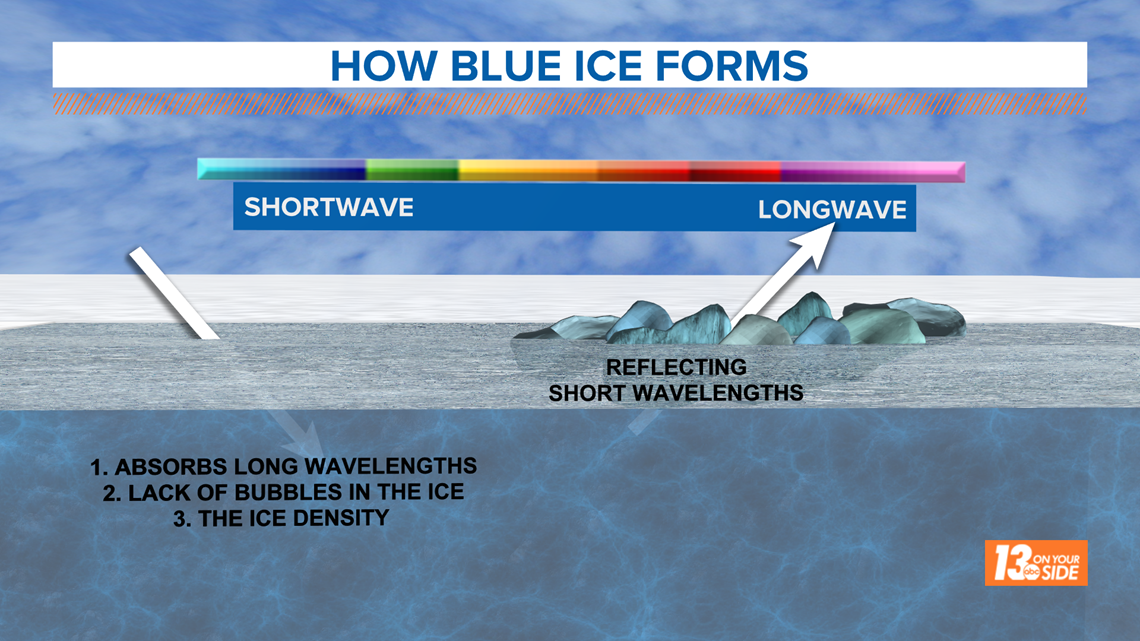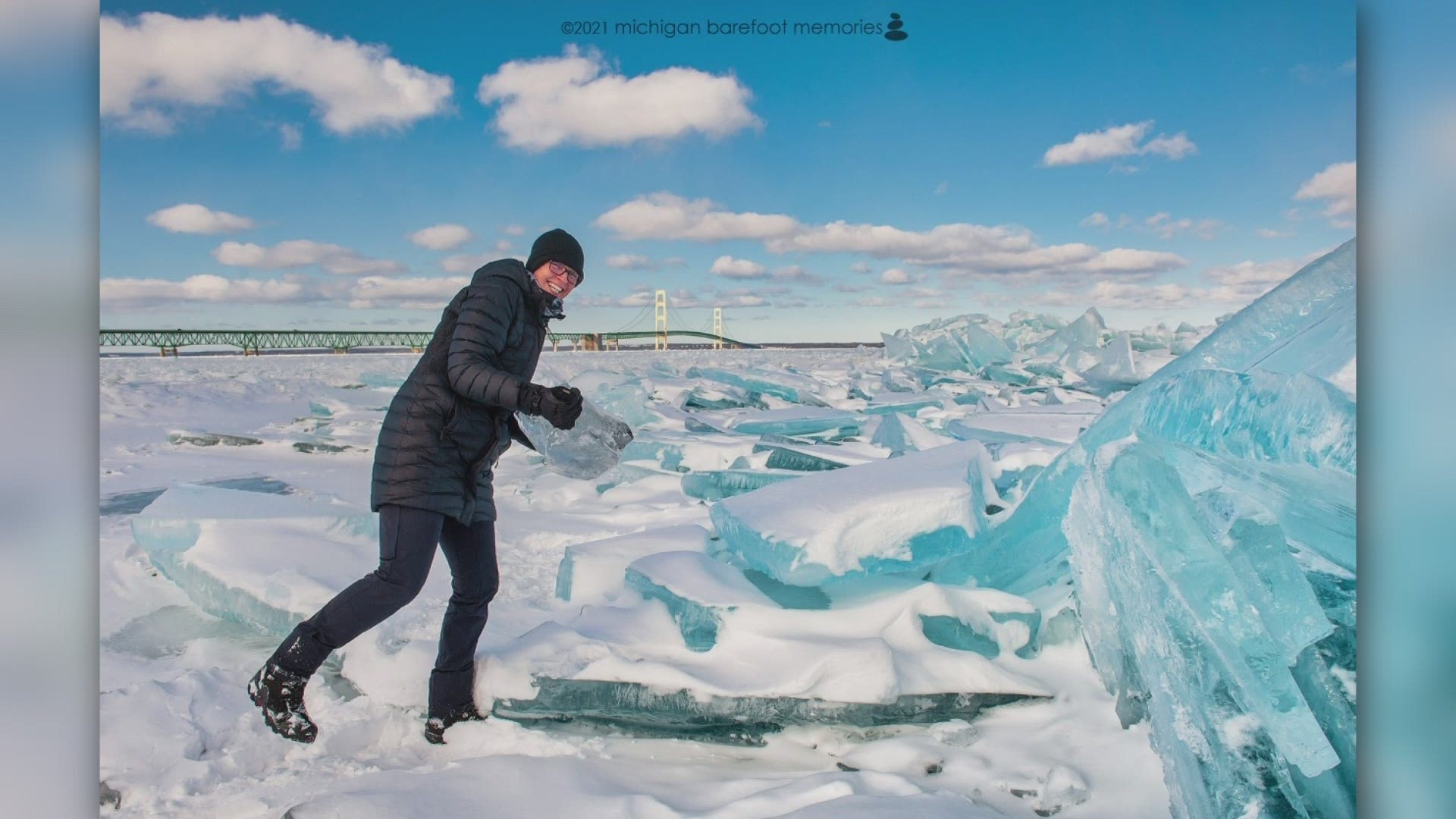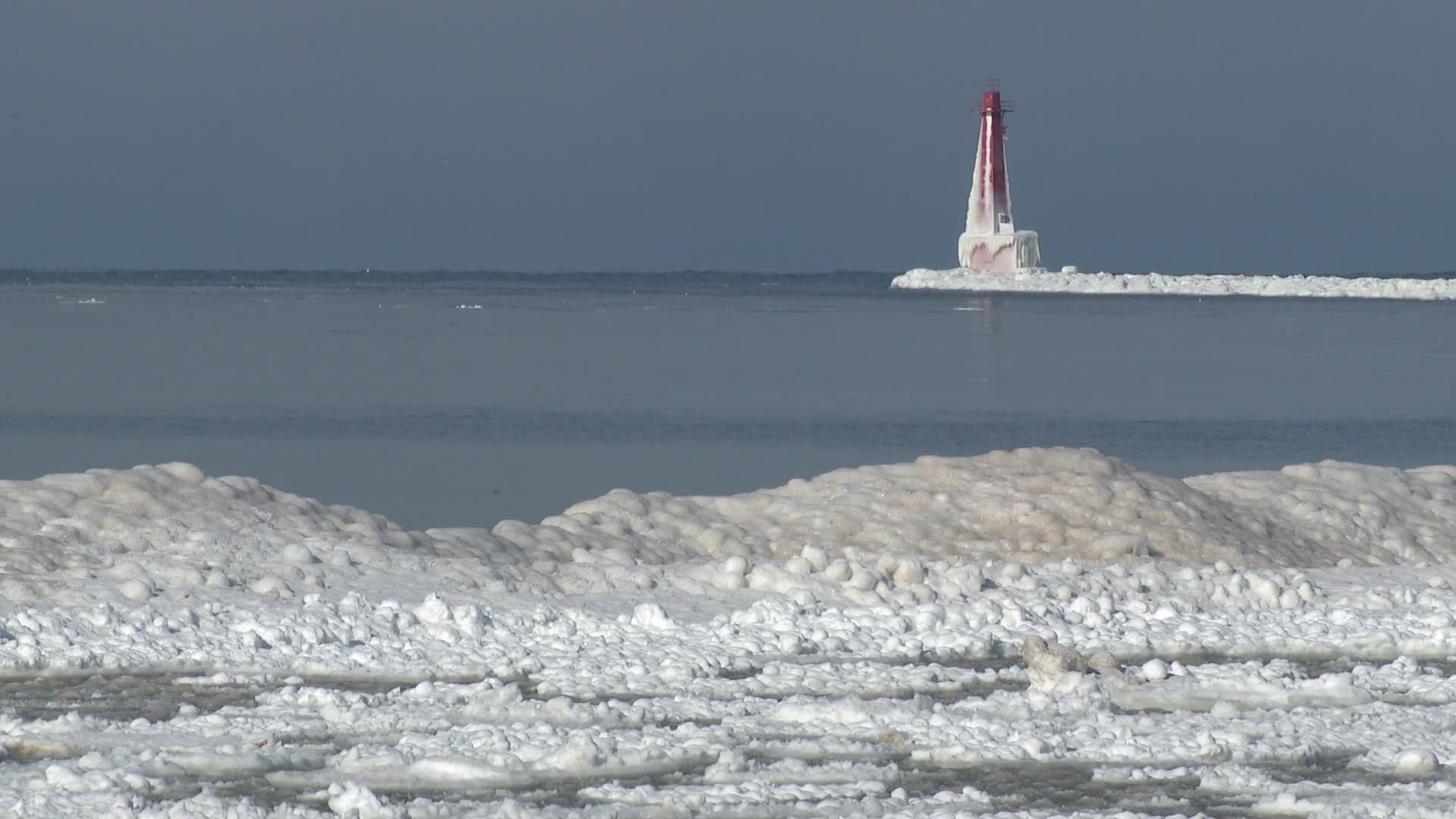GRAND RAPIDS, Mich — Michigan winters can be lovely, and this eye-catching blue ice has many braving Northern Michigan’s wintery weather just to catch a glimpse.
But why exactly does this frozen water appear to be pale to teal blue?
According to George Leshkevich, a physical scientist emeritus at NOAA’s Great Lakes Environmental Center, there are three things that go into the formation of blue ice:
- Ice needs to dense - the thicker the icy, the higher the likelihood it will form.
- Very few bubbles - pure/clean ice has fewer bubbles in it.
- Long wavelengths absorbed, short wavelengths reflected


The combination of the thick ice and lack of bubbles allows long wavelength colors to be absorbed more than normal. That means oranges, yellows, and reds are no longer visible, leaving only the short-wavelength visible colors to be reflected into our eyes. A combo of green, blue, and purple is reflected back. This creates the pale blue or teal color we see.
This spectacular blue ice can be visible in any of the Great Lakes but is most common near the Straits of Mackinac, due to the purity and thick ice that typically forms in this area.
►Make it easy to keep up to date with more stories like this. Download the 13 ON YOUR SIDE app now.
Have a news tip? Email news@13onyourside.com, visit our Facebook page or Twitter. Subscribe to our YouTube channel.


